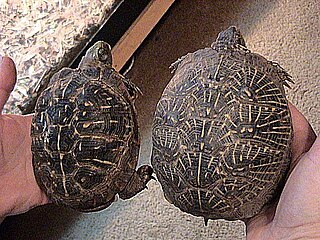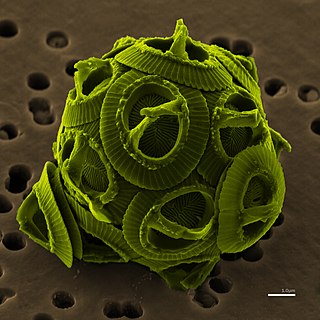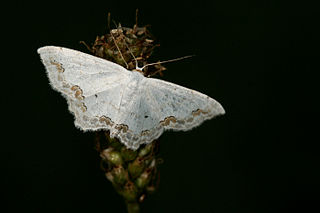
Smilax ornata is a perennial, trailing vine with prickly stems that is native to Mexico and Central America. Common names include sarsaparilla, Honduran sarsaparilla, and Jamaican sarsaparilla. It is known in Spanish as zarzaparrilla, which is derived from the words zarza meaning "bramble", and parrilla, meaning "little grape vine".

The Sri Lanka blue magpie or Ceylon magpie is a member of the crow family living in the hill forests of Sri Lanka, where it is endemic.

Box turtles are North American turtles of the genus Terrapene. Although box turtles are superficially similar to tortoises in terrestrial habits and overall appearance, they are actually members of the American pond turtle family (Emydidae). The twelve taxa which are distinguished in the genus are distributed over four species. They are largely characterized by having a domed shell, which is hinged at the bottom, allowing the animal to close its shell tightly to escape predators.

Terrapene ornata is a species of North American box turtle sometimes referred to as the western box turtle or ornate box turtle.

The European White Elm cultivar Ulmus laevis 'Ornata' was erroneously identified by Carrière as U. communis ornata in 1858. 'Ornata' was named by Carrière for the numerous and intensely green leaves which gave the trees 'a magnificent appearance'.

Turbinaria is a genus of brown algae (Phaeophyceae) found primarily in tropical marine waters. It generally grows on rocky substrates. In tropical Turbinaria species that are often preferentially consumed by herbivorous fishes and echinoids, there is a relatively low level of phenolics and tannins.

Sawdonia is a member of the Sawdoniaceae family, which contains the earliest vascular land plants. These plants are best recognized by the large amount of spikes (enations) covering the plant. These are vascular plants that do not have vascular systems in their enations. The first species of this genus was described in 1859 by Sir J. William Dawson and, was originally attributed to the Psilophyton genus. He named this plant Psilophyton Princeps. In 1971 Francis Hueber proposed a new genus for this species due to its "Divergent technical characters from the generic description for Psilophyton." The holotype used for description is Dawson Collection Number 48, pro parte, Museum Specimen Number 3243. Sir J. William Dawson Collection, Peter Redpath Museum, McGill University, Montreal, Qu6bec, Canada.

The Thyatirinae are a subfamily of the moth family Drepanidae with about 200 species described. Until recently, most classifications treated this group as a separate family called Thyatiridae.

Gephyrocapsa is a genus of haptophytes.

Scopula ornata is a moth of the family Geometridae. It is found in Europe, North Africa and the Near East.
Acalypha ornata is a species in the botanical family Euphorbiaceae. In Africa it is widely used as a medicinal plant. The stems are used as fibres for weaving baskets. The leaves are eaten as a vegetable; the plants are also fed to domestic animals. Acalypha ornata is sometimes planted as an ornamental plant.

The ornate slider is turtle belonging to the genus Trachemys of the family Emydidae. It is found in Guerrero, Jalisco, Nayarit and Sinaloa in western Mexico.
Epipsestis is a genus of moth belonging to the subfamily Thyatirinae first described by Matsumura in 1921.
Horithyatira is a genus of moth belonging to the subfamily Thyatirinae.

Horithyatira decorata is a moth in the family Drepanidae. It is found from the north-eastern Himalaya and Nepal to southern China and Taiwan.
Epipsestis ornata is a moth in the family Drepanidae. It was described by Leech in 1889. It is found in Japan, the Korean Peninsula, the Russian Far East and the Chinese provinces of Heilongjiang, Jilin and Shaanxi.
Horithyatira diehli is a moth in the family Drepanidae. It is found in Indonesia (Sumatra) and India (Assam).
Horithyatira javanica is a moth in the family Drepanidae. It is found in Indonesia (Java).
Thyatira delattini is a moth in the family Drepanidae. It was described by Werny in 1966. It is found in New Guinea.

Tetrix ornata, known generally as the ornate pygmy grasshopper or ornate grouse locust, is a species of pygmy grasshopper in the family Tetrigidae. It is found in North America.














